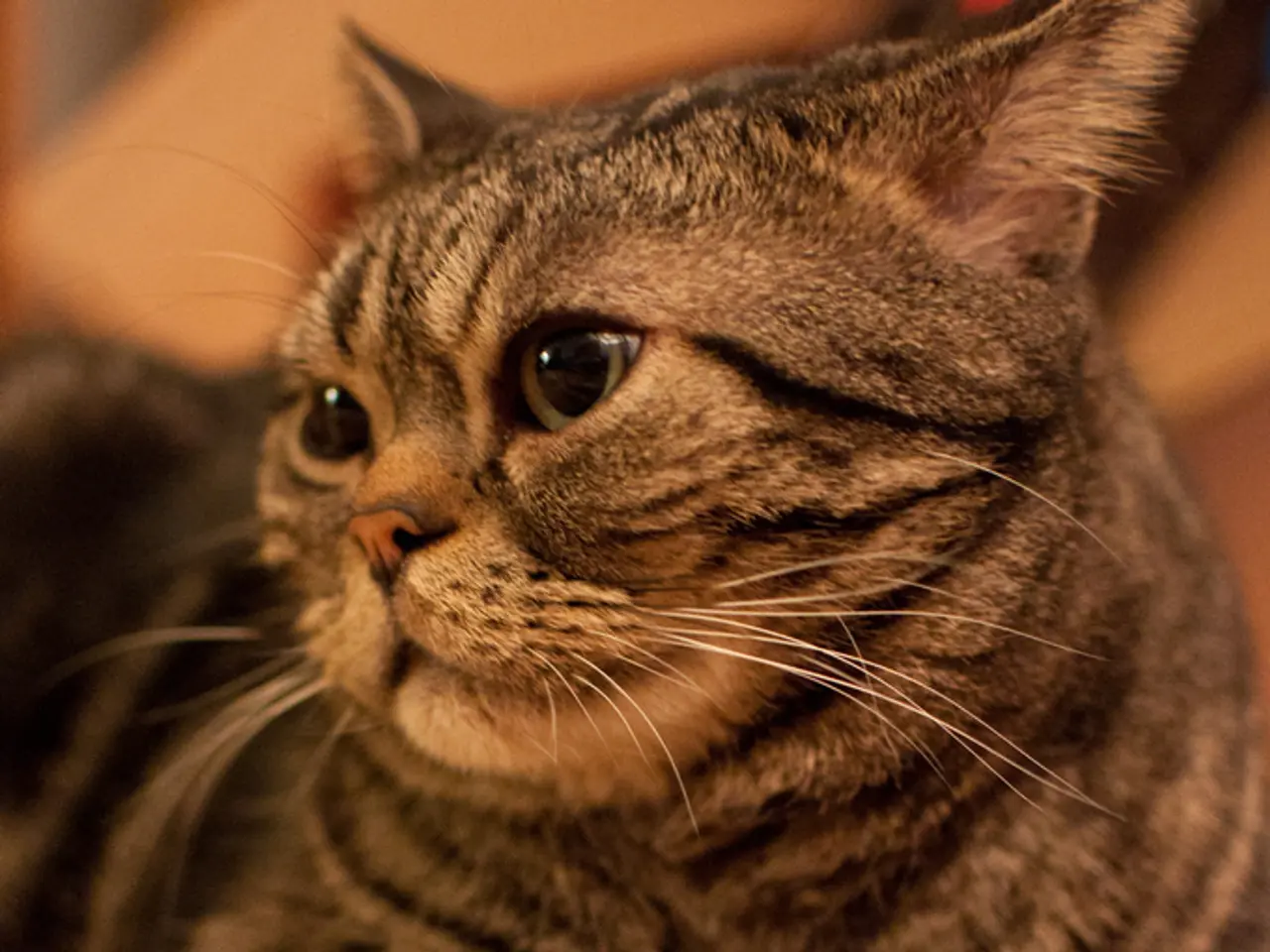What Causes My Pet Cat to Have Flaky Skin?
In the world of feline care, dandruff is a common concern for many cat owners. This article aims to provide a clear and concise guide on identifying and treating dandruff in cats.
Bacterial or fungal infections, poor diet, obesity, buildup under the fur, skin allergies, parasites like ringworm, and underlying health issues such as diabetes or autoimmune problems can all contribute to dandruff in cats. Watch for signs like dry skin, itching, hair loss, redness, excessive grooming, weight loss, fatigue, or changes in appetite alongside the dandruff.
To address this issue, improving hydration and diet is crucial. Ensure your cat drinks plenty of water and consider adding wet/canned food to increase moisture intake. A diet lacking certain oils can lead to dandruff, so providing a balanced diet rich in essential fatty acids can help.
Regular grooming is also essential. Brush your cat once or twice weekly to remove dead skin flakes and stimulate healthy skin oils. Choose a brush appropriate for your cat's fur type to make the grooming process smoother.
However, because dandruff can be a sign of more serious conditions such as infections, allergies, or dermatitis, a vet checkup is essential. Treatment may include addressing parasites, infections, or inflammatory conditions with appropriate medications. Avoid using steroids without veterinary guidance as they might worsen skin issues long-term.
In some cases, a professional groomer might be needed to manage long fur or matting. Untreated skin infections can worsen and spread, so it's important to monitor for signs of skin infections or parasites.
Topical treatments, like medicated shampoos or sprays, can soothe irritated skin, but only use products recommended by your vet. Fleas and lice can irritate a cat's skin, triggering excessive scratching and skin shedding. Serious health issues like kidney disease or cutaneous lymphoma can present with skin problems. Cheyletiella mites, also known as "walking dandruff," can cause intense flaking and are contagious to other pets.
In conclusion, understanding the causes of dandruff in cats and taking proactive steps to manage it can help maintain your cat's overall health and wellbeing. Regular grooming, improving diet, and seeking veterinary advice when necessary are key to managing dandruff effectively.
- In relation to the health-and-wellness of pets, science has identified various factors that contribute to dandruff in cats, including environmental factors, technology-driven diet changes, and skin allergies.
- Adhering to a lifestyle that incorporates regular skin-care routines, like brushing cats weekly, can help manage dandruff in cats, as well as promoting overall health and wellbeing.
- To protect the health of pets and prevent the spread of contagious conditions like Cheyletiella mites, which can cause dandruff and other skin problems, it's essential to keep pets free from parasites, such as fleas and lice, through regular veterinary checkups and treatments.




